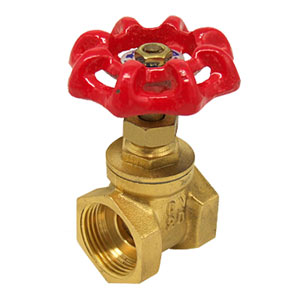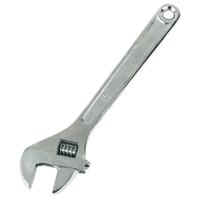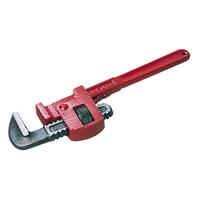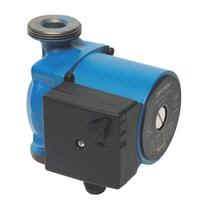Loosening Domestic water valves
The Jammed Tap Valve
A very common problem. One of our leading contenders for most popular question on DIY Doctor is; how do I undo the top of my tap to get to the tap washer. There used to be no magic answer, but now there is! There are two ways of un-jamming tap valves but a variety of ways of un-jamming other types of valves. We will deal with the most common, tap valves first.
Take a look at the video at the bottom of this page to find out about the Easy Tapsplitter kit from ABD tools. You will see immediately how the simplicity of this tool creates such an easy way to un-jam the tap headgear. Here are the benefits of using this method of un-jamming a tap headgear to change a tap washer or re-grind a tap valve seat.
- There is no danger of a broken basin as the spanner or wrench slips off
- There is no danger of broken knuckles as the tap moves suddenly
- There is no possibility of rounding off the head of the nut on the tap
- There is no force required
- There is no danger of the tap being damaged
- If the headgear nut is already rounded, the Pozibite attachment to the Easy Tapsplitter kit will still guarantee that the tap washer can be removed or the valve seat reground
The Jammed Water Valve
Firstly, remove any items of clothing from near the valve and apply oil to any part that looks as if it may move with a light coat of penetrating oil.
Wipe off any oil remaining on the surface, it will achieve nothing unless it can get to the threads. Normally, penetrating oil containers come with a very fine tube attachment, which enables you to get into the tightest of places. Once you have done this work your way through the following steps:
- Try tapping the body of the valve with the handle of a wench or adjustable spanner while you turn the valve will do the job
- Warm up the body of the valve with a hair dryer, or (carefully) with a blowtorch might expand the body of the valve enough to allow the gate (or other moving parts) to move more freely
- As a last resort try to attach a spanner or wrench to the handle of the valve and extend the handle of the wrench with something slipped over it to give you a little more leverage. While you are using this extra leverage, you must hold the valve body tightly in position to stop any of the joints to and from it twisting. See our project on removing a radiator to find out how to apply this counter-leverage

Water valve or gate valve – The gate valve lifts a ″gate″ in the tap to let water in
Adjustable Spanners and Other Types of Spanner
Always ensure you have tightened the adjustable spanner to the correct size for the nut or valve you are working on. Spanners should be an exact fit. If you are using an adjustable spanner of some kind to adjust or un-jam a valve be very careful you have the right spanner.
There are several kinds of adjustable spanner, some with the adjustment in the handle and others where the adjustment is closer to the jaw. Some adjustable’s allow you to simply push the jaws together to fit the nut or valve and lock in place using a ratchet system.

Adjustable Spanners used in a lot of plumbing operations – Adjust the jaws of the spanner correctly to avoid it slipping off
Using Pipe Wrenches, Stilsons and Footprint Wrenches
Do not go at it hell for leather! Sometimes, rarely, but sometimes, they do break. If none of the above works with all the pressure you dare, then you will have to call a plumber.
Remember when you do get the valve open, and we are sure you will, open and close it once a month to keep it from "freezing" again. This applies to all valves especially the incoming mains stopcock. In the event that you do need a new valve then a trip to your local DIY shed or plumbers merchant will sort you out.
Most wrenches have teeth in the jaws. This is for gripping. A wrench is a gripping tool which (usually) grips while a spanner does the turning, or undoing. Sometimes, where there is no flat side for a spanner to grip, for example on a threaded pipe, the teeth of the wrench will be good for turning the object.

Using Stilsons, Mole Wrenches, Pipe wrenches and Footprints for loosening jammed water valves
Un-sticking Jammed Radiator Valves
For radiator valves, the advice is similar to the above once the valve cover is removed. See our removing a radiator project for more information for this job and then use a spanner to undo the peg which extends from the valve body.
With thermostatic radiator valves the situation is often a great deal simpler. When you have removed the head you should, in most cases. See a pin sticking out from the body of the valve. A gentle tap with the handle of a spanner or wrench should release this nicely.

Stuck radiator valves can be taped open or changed easily
Stuck Central Heating Pumps
Most pump valves can be released by rotating the shaft, which is usually found under the central cover screw on the head of the pump. A small screwdriver can then be used to turn the shaft and impeller.
If you are in any doubt about this operation go to the foot of the page and use our find a tradesman service to locate a plumber or heating engineer near you. It may be that the pump has simply come to the end of its mechanically useful life and extending this could damage the rest of the heating system so you will need to get it checked out just to be certain.

Unjamming a central heating pump is usually done by rotating the shaft

